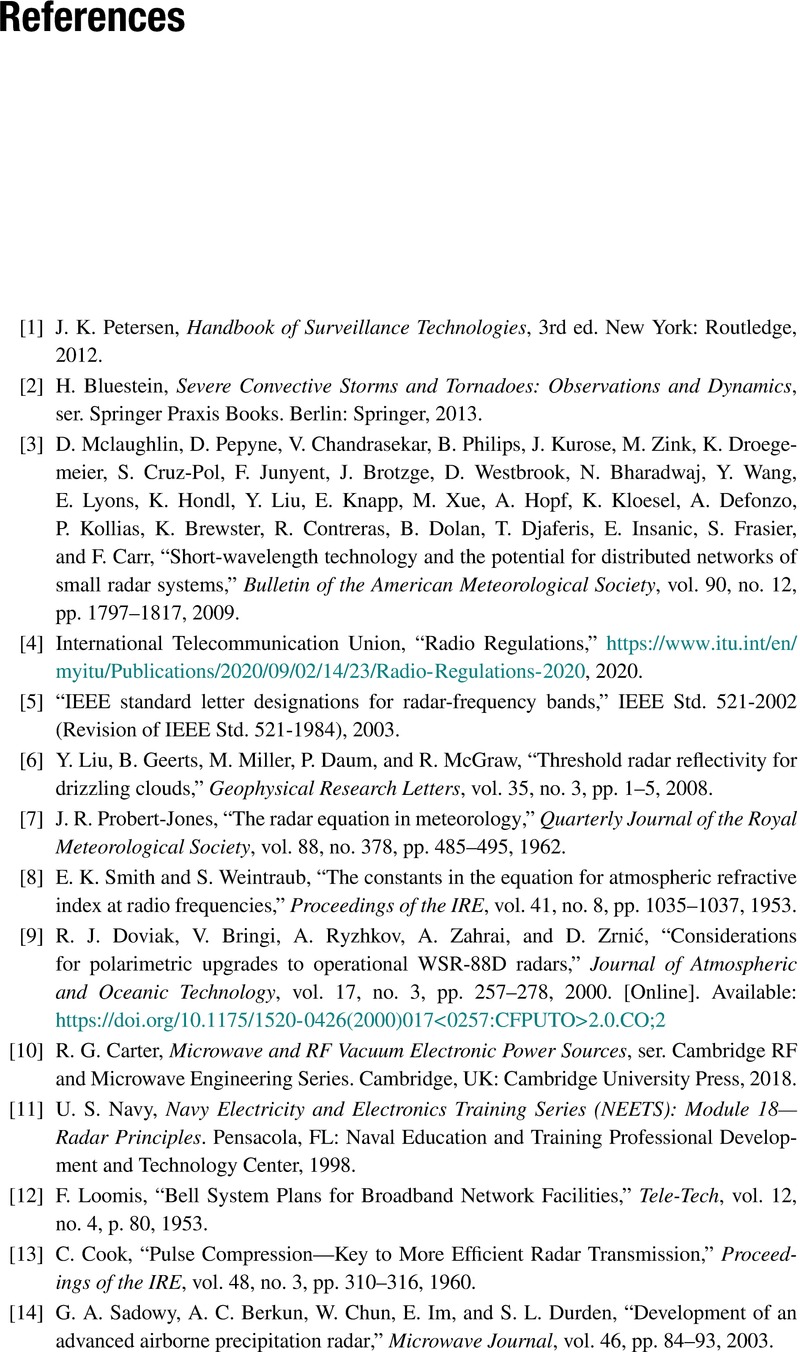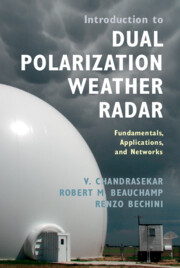Book contents
- Frontmatter
- Contents
- Preface
- Notations and Acronyms
- 1 Introduction
- 2 Elements of Dual Polarization Radar Systems
- 3 Essential Precipitation Physics for Dual Polarization Radar
- 4 Basic Scattering Theory and Principles for Radar Meteorology
- 5 Introduction to Weather Radar Signals
- 6 Weather Radar Signal Processing
- 7 Data Quality, Data Science, and Engineering of Weather Radars
- 8 Radar Observations and Classification
- 9 Rainfall Estimation and Attenuation Correction
- 10 Weather Radar Networks
- Appendix Complex Numbers
- References
- Index
- References
References
Published online by Cambridge University Press: 03 August 2023
- Frontmatter
- Contents
- Preface
- Notations and Acronyms
- 1 Introduction
- 2 Elements of Dual Polarization Radar Systems
- 3 Essential Precipitation Physics for Dual Polarization Radar
- 4 Basic Scattering Theory and Principles for Radar Meteorology
- 5 Introduction to Weather Radar Signals
- 6 Weather Radar Signal Processing
- 7 Data Quality, Data Science, and Engineering of Weather Radars
- 8 Radar Observations and Classification
- 9 Rainfall Estimation and Attenuation Correction
- 10 Weather Radar Networks
- Appendix Complex Numbers
- References
- Index
- References
Summary

- Type
- Chapter
- Information
- Introduction to Dual Polarization Weather RadarFundamentals, Applications, and Networks, pp. 467 - 490Publisher: Cambridge University PressPrint publication year: 2023



